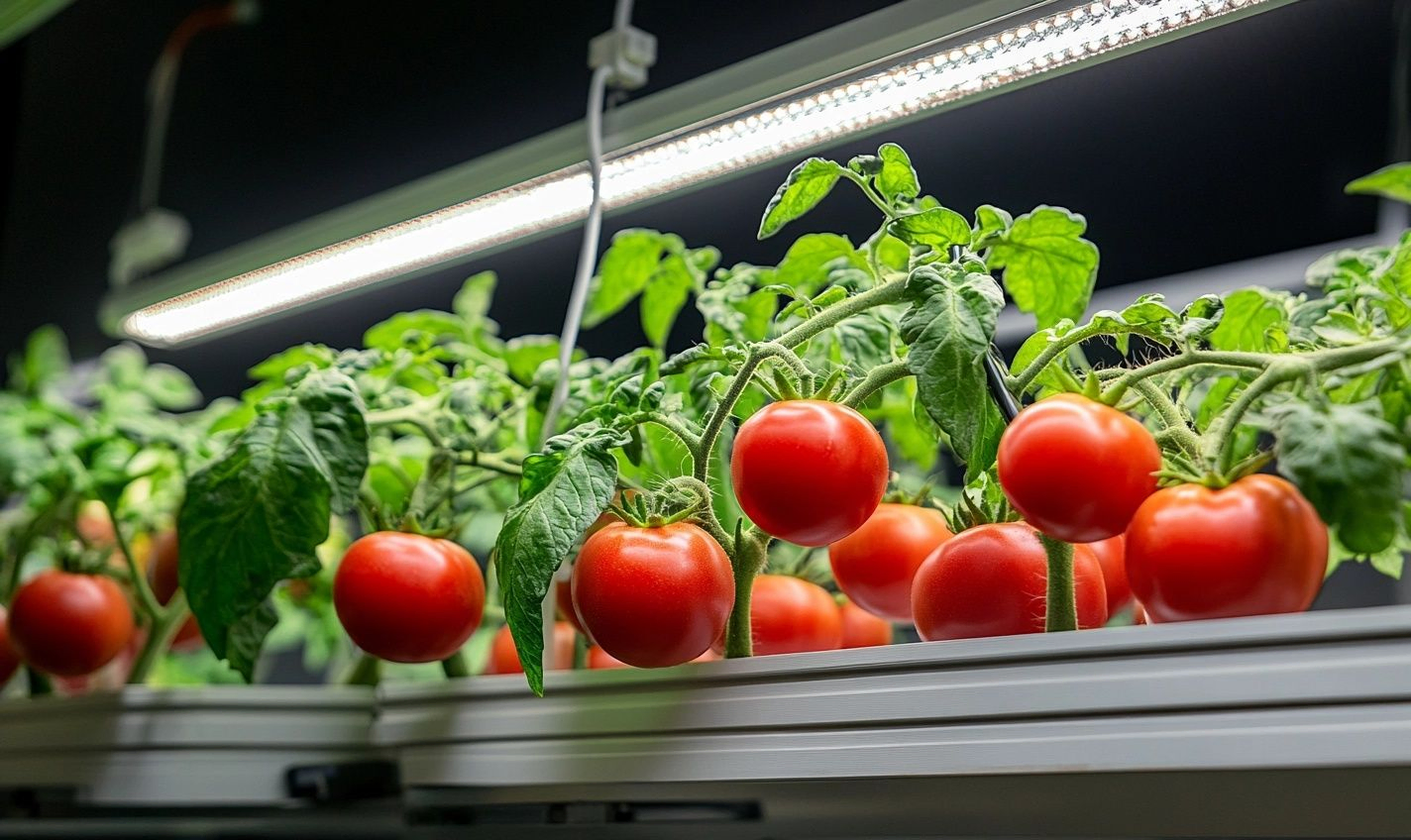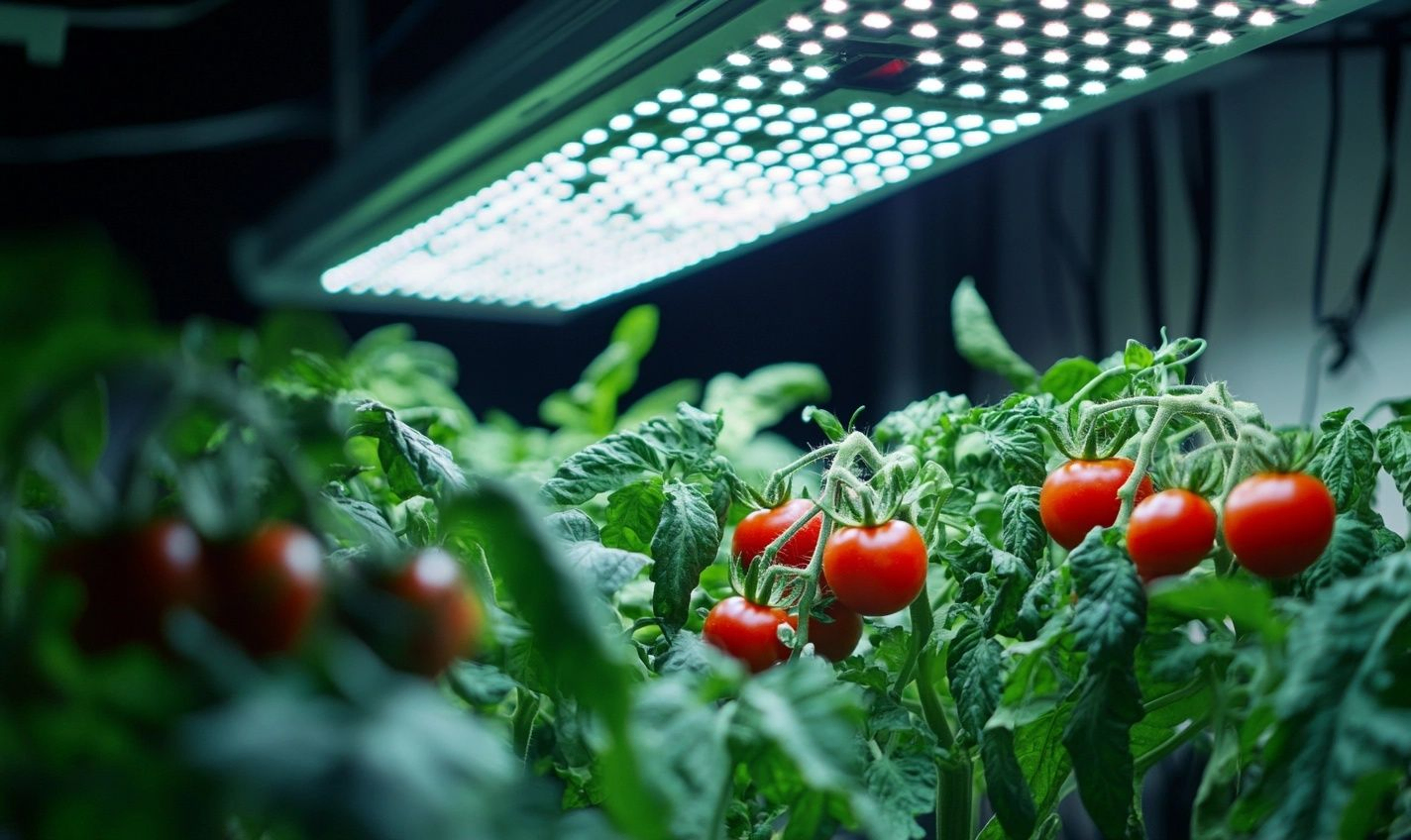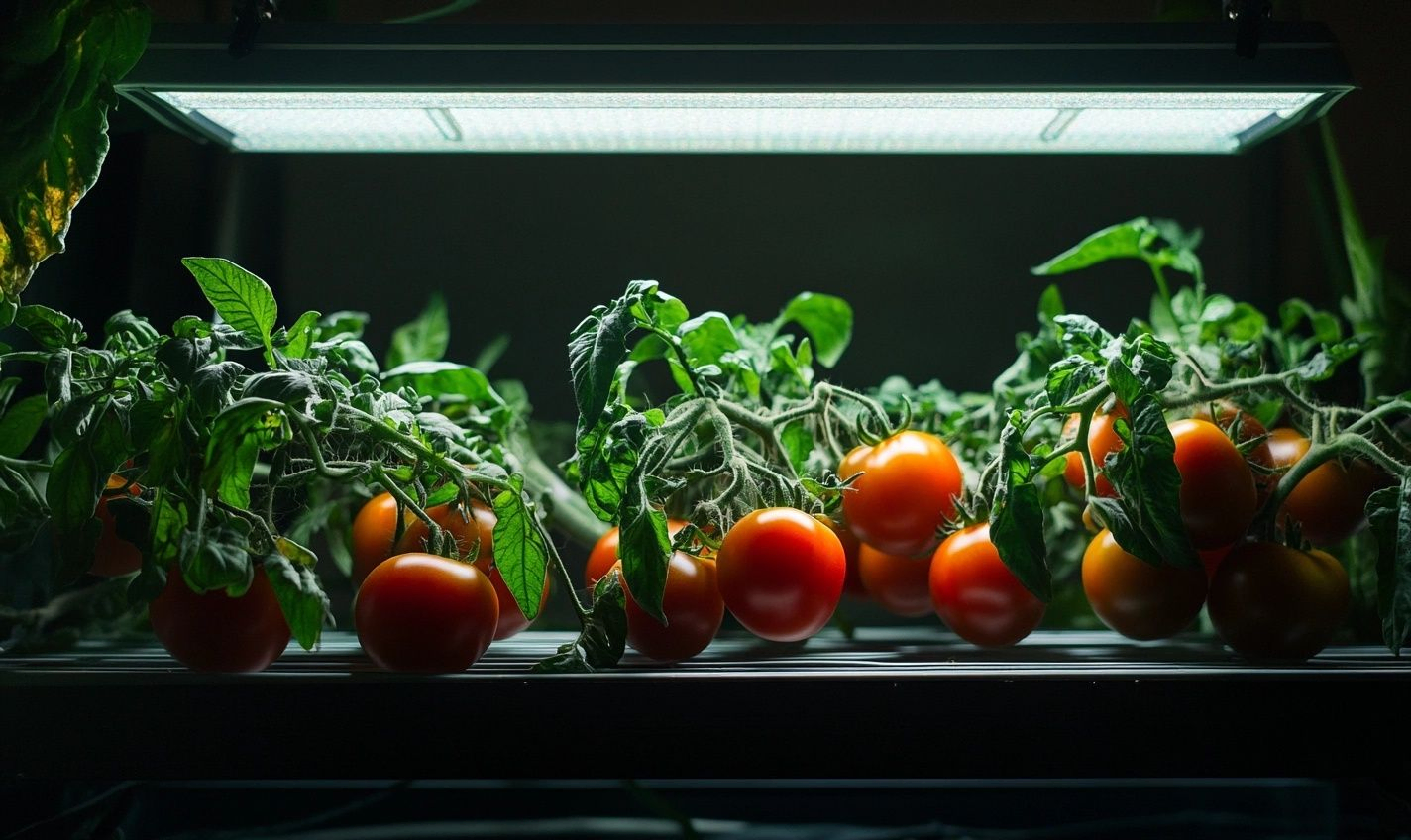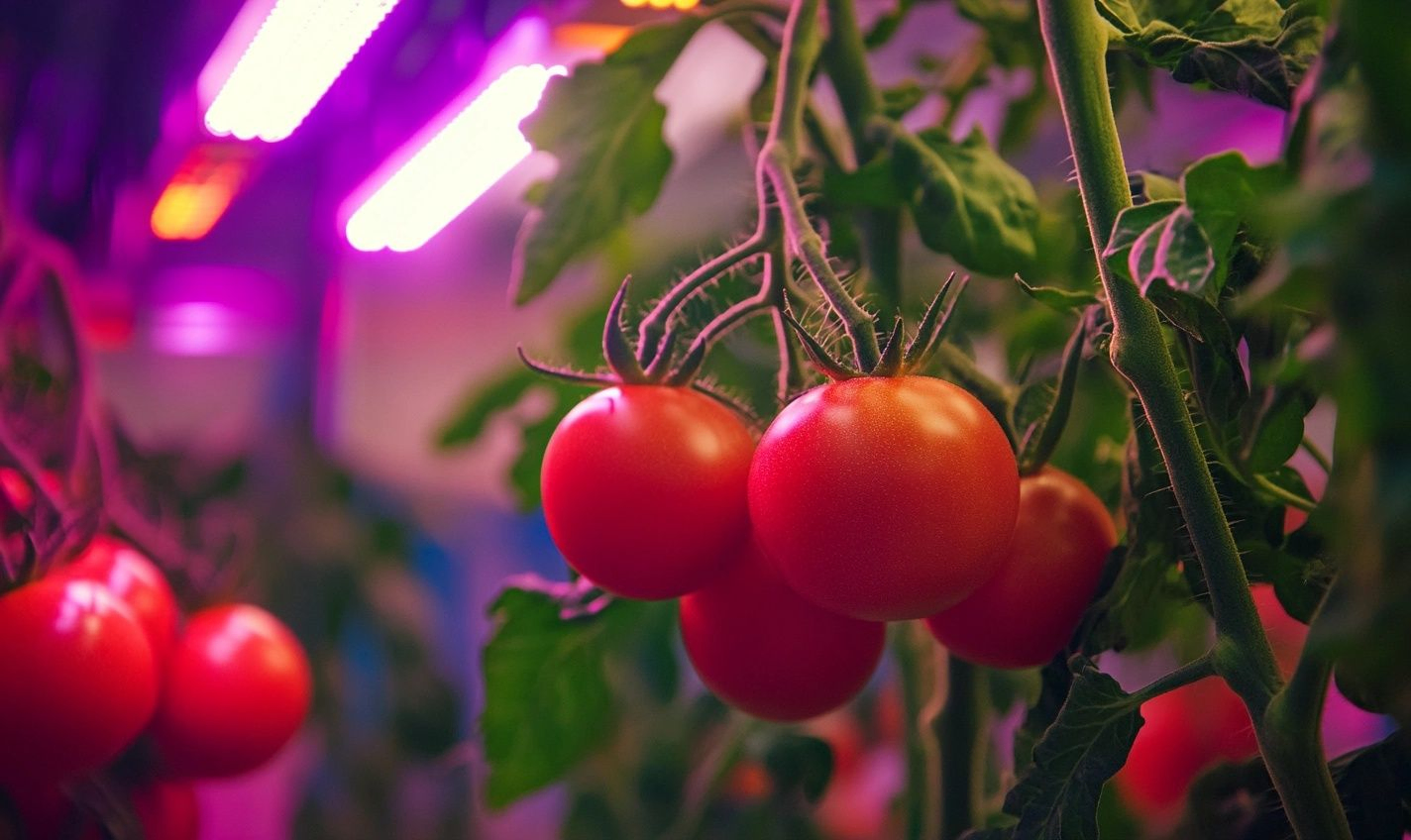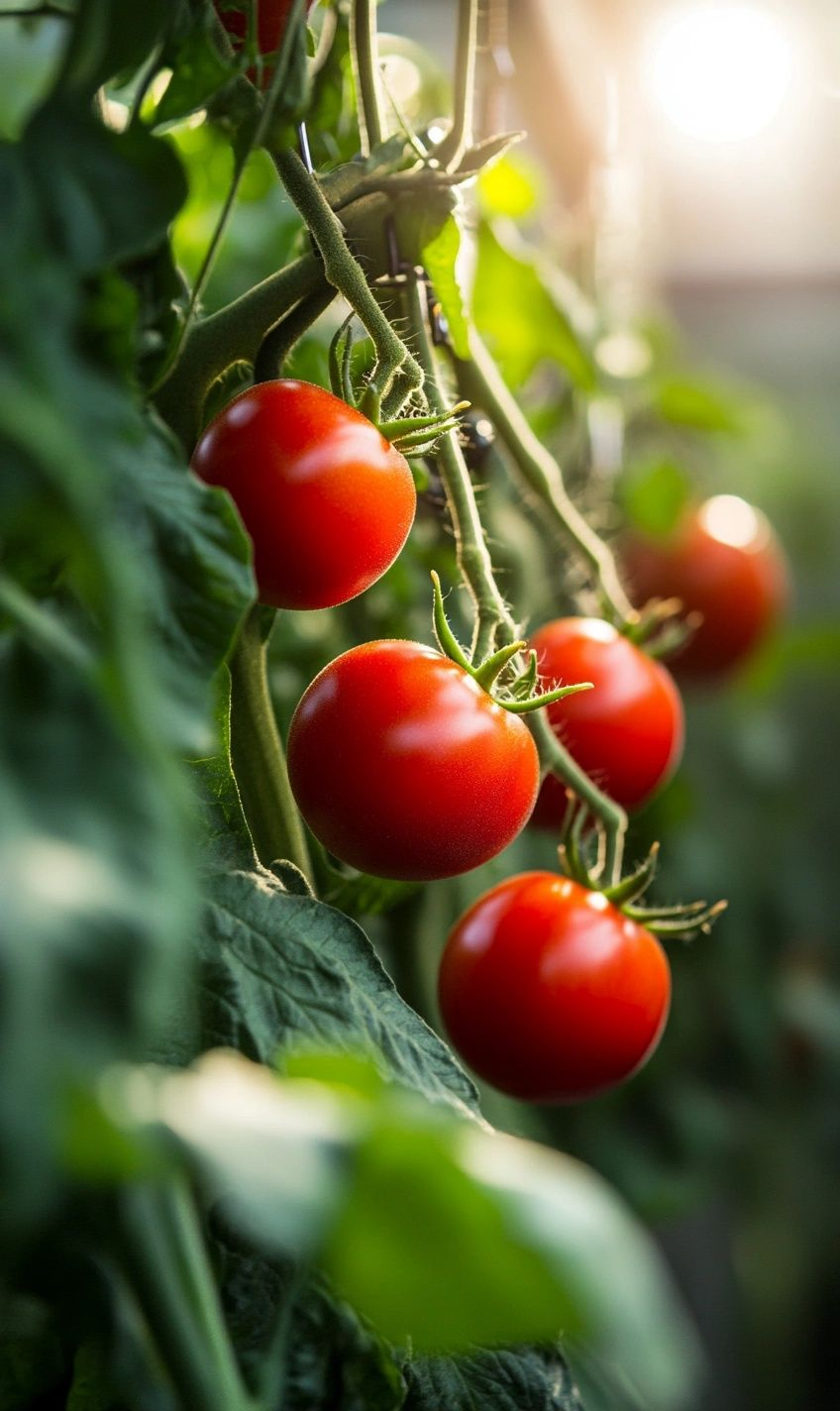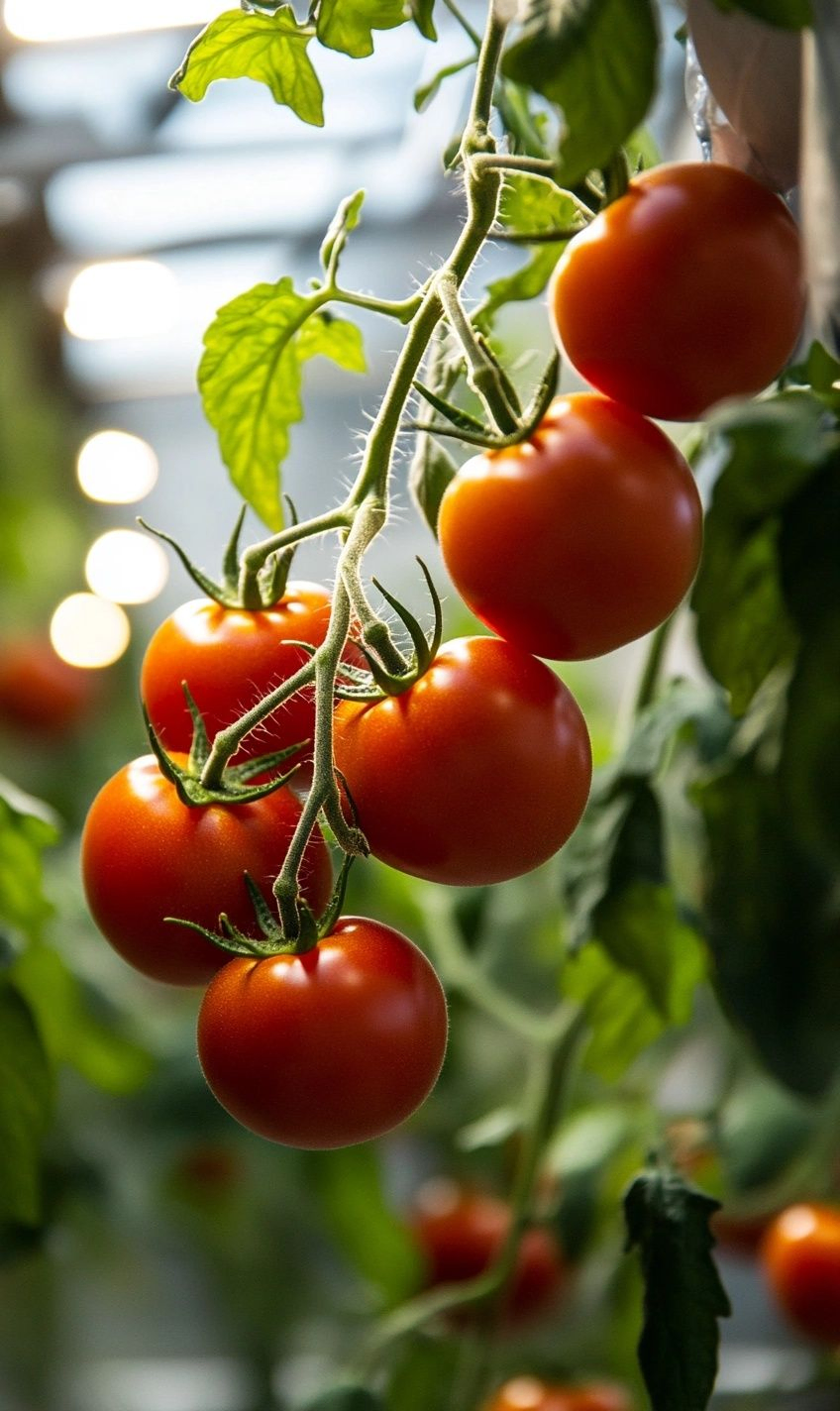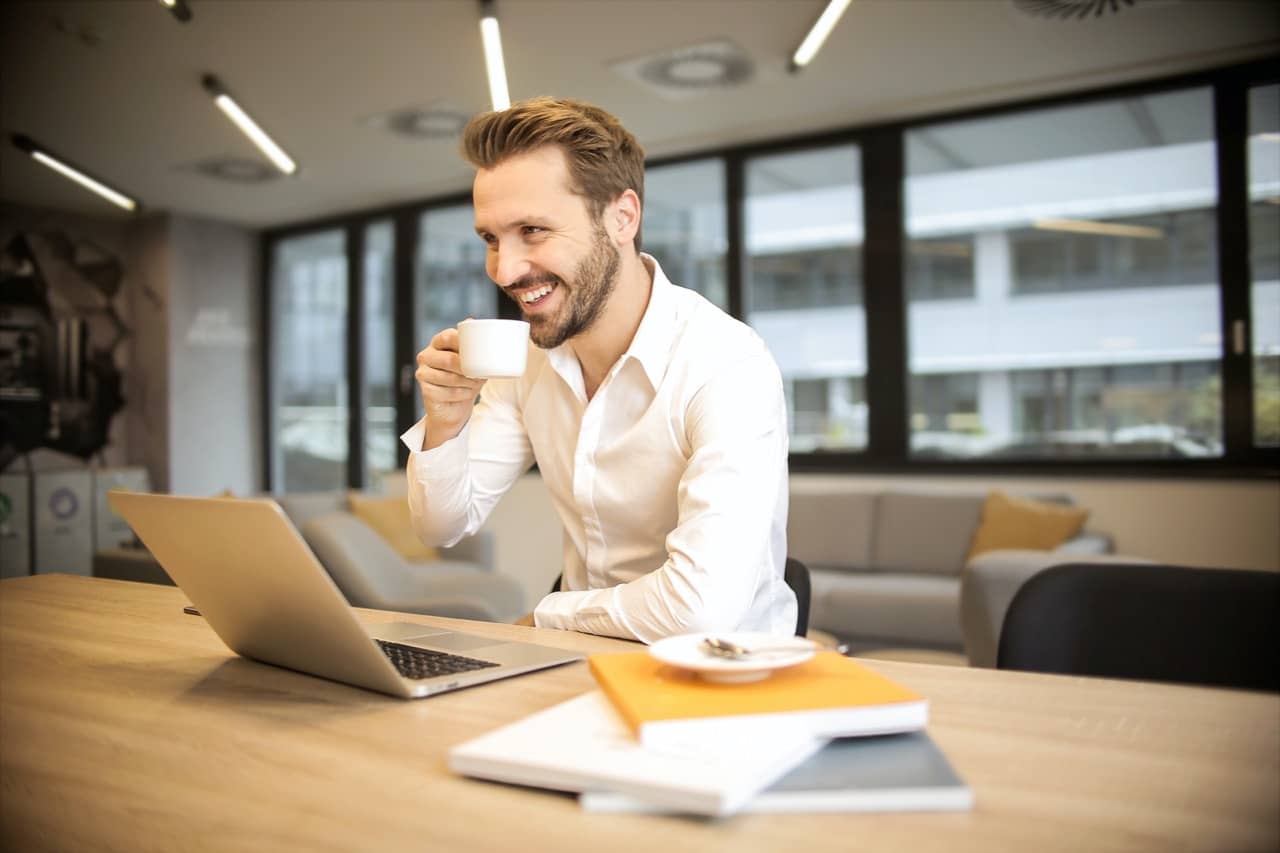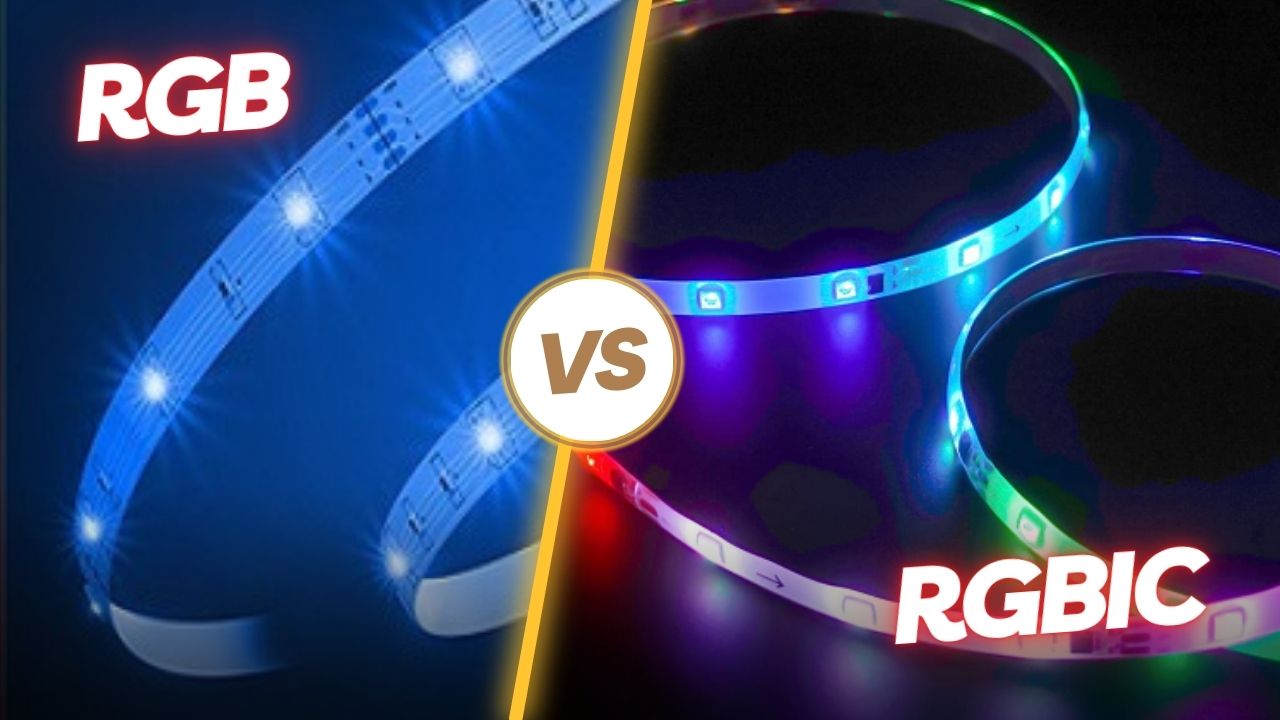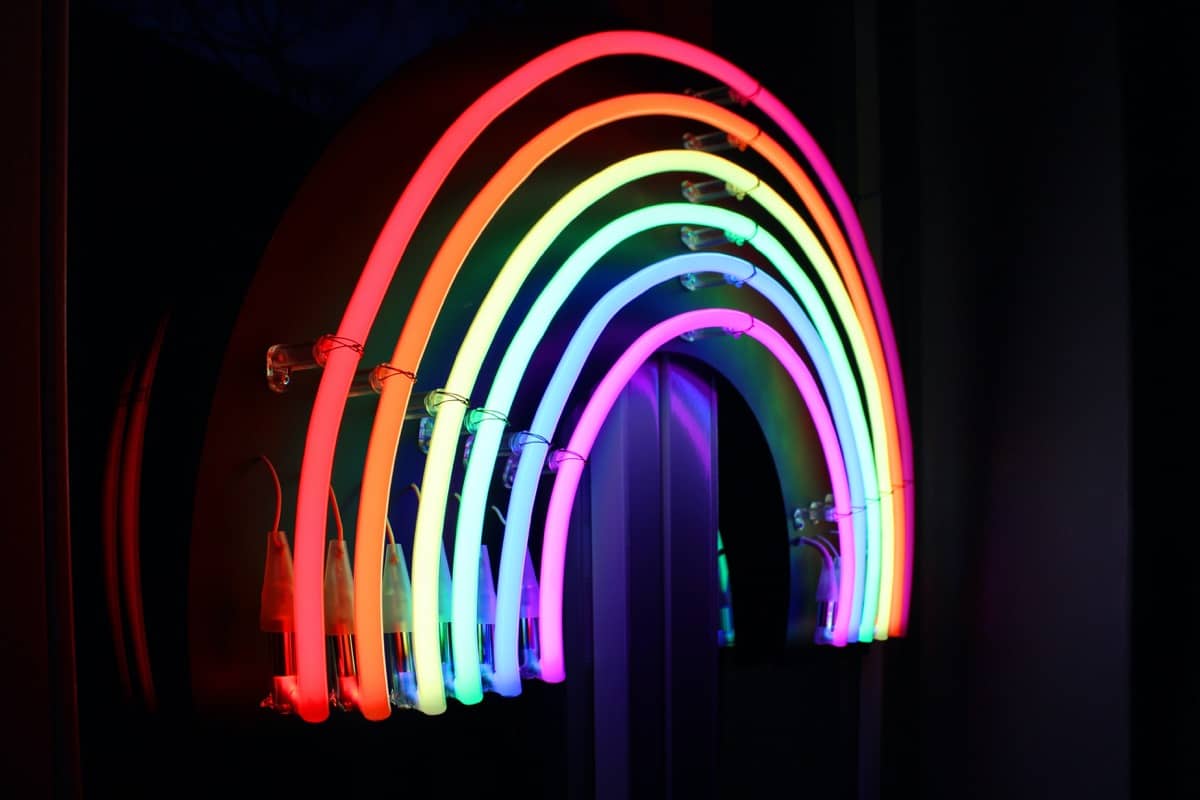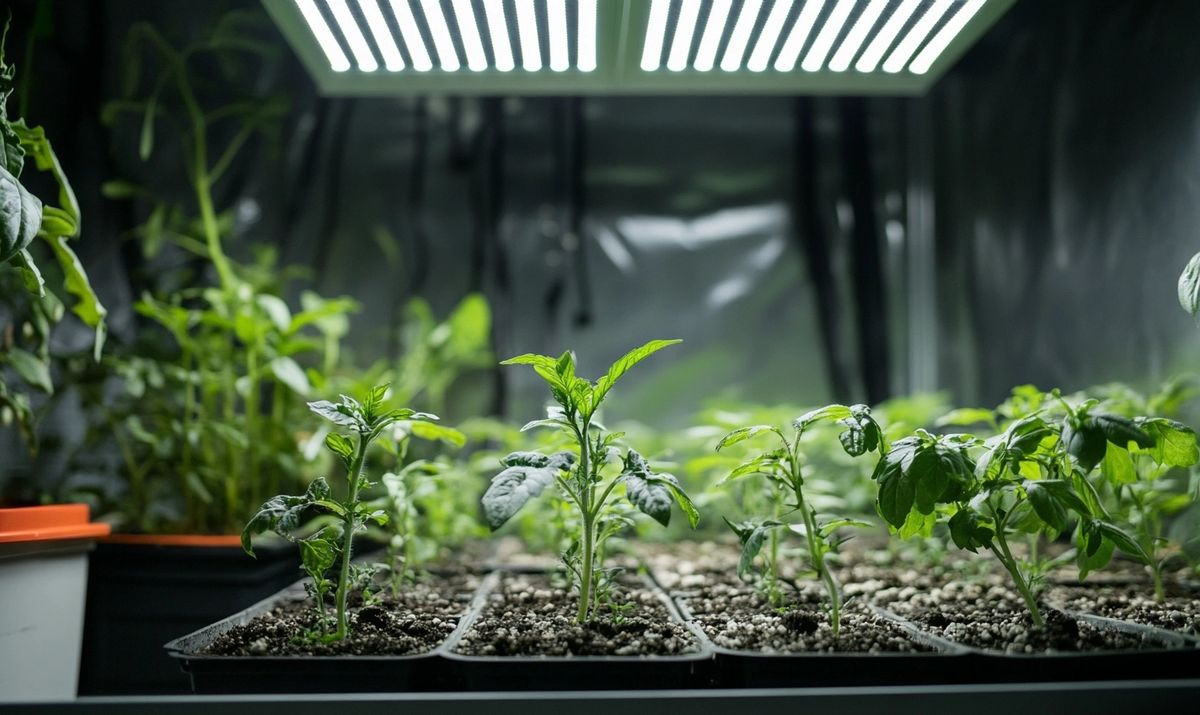
Welcome to the world of indoor gardening, where the magical union of light and nature brings bountiful harvests into your home! If you’re a passionate tomato grower or an aspiring horticulturist, understanding the role of lighting is crucial in cultivating vibrant and fruitful plants. With the rise of LED grow lights, the question arises: what is the best LED grow light for tomatoes?
Tomatoes are among the most beloved vegetables (or fruits, as they like to remind us!) that thrive with the right spectrum of light, moisture, and nutrients. As an expert in indoor gardening, I’ve seen firsthand how the proper lighting can dramatically enhance your tomato plants’ growth, yield, and overall health. LED grow lights are energy-efficient, long-lasting, and tailored to mimic the sun’s natural spectrum, making them a game-changer for any grower.
With the ability to fine-tune light quality to meet your tomatoes’ specific needs during various growth stages, you can unlock their full potential regardless of the season. Join me as we explore the nuances of finding the perfect LED grow light that fits your space, budget, and growing goals, ensuring that your tomato plants flourish all year round.
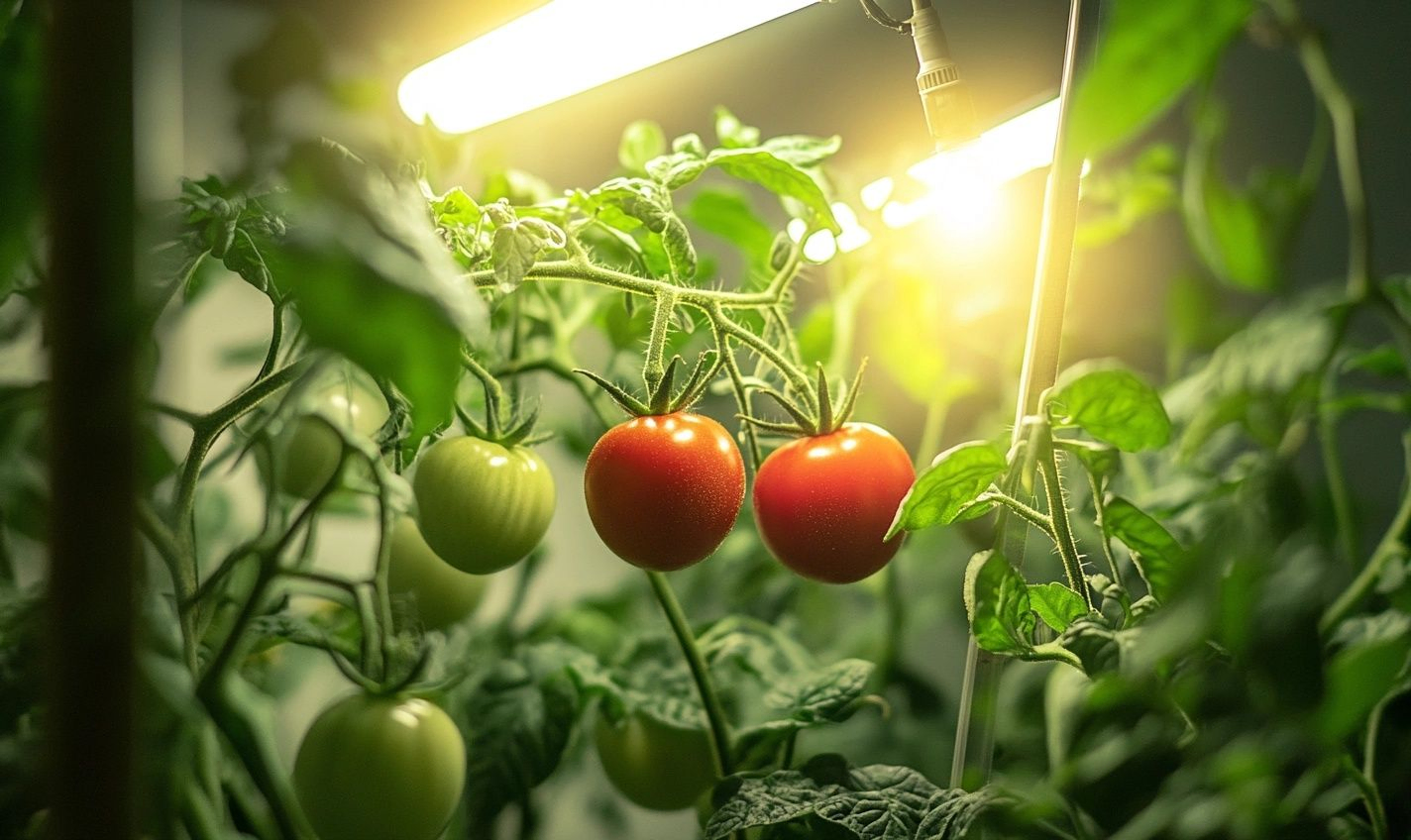
Understanding the Light Requirements for Tomato Plants
When it comes to growing tomatoes, light is a game changer. You can think of light as the food for your plant. Just like we need a balanced diet to thrive, tomatoes crave the right amount of light to grow juicy and delicious fruits. But how much light do these little gems need?
What Tomatoes Crave
Tomatoes love bright, direct sunlight. Aim for at least 12-16 hours of light daily if you’re growing them indoors. Yes, that’s quite a bit! But don’t worry—LED grow lights can make meeting this requirement much more accessible.
Different Stages, Different Needs
As your tomatoes progress from seedlings to full-grown plants, their light needs change:
- Seedlings: 12-14 hours of light is plenty.
- Vegetative stage: Increase to 14-16 hours.
- Flowering and fruiting: Keep that light steady at 14-16 hours.
It’s like adjusting the thermostat, depending on the season! Each stage has its ideal setting.
Quality Over Quantity
It’s not just about hours; it’s also about the quality of light. Tomato plants flourish under full-spectrum light, which mimics natural sunlight. Think of your plants as tiny sunbathers soaking up those rays. The right spectrum helps them produce solid stems and vibrant fruits.
If you’re asking yourself, “What is the best LED grow light for tomatoes?” You want lights that promote both vegetative growth and flowering. Look for those with the red and blue spectrums, as these are crucial for your plants. It’s like having the perfect playlist for a summer road trip—it keeps everything vibrant and happy!
The Role of Distance
One common mistake is keeping the lights too far away. LED grow lights are powerful but can lose effectiveness if placed too high. Keep them around 12-24 inches above your plants. It’s like keeping a good friend close—you want them nearby to share the good vibes!
With the proper setup and lighting, your tomato plants will thrive, producing fruit that makes all the effort worthwhile. After all, nothing beats the taste of a home-grown tomato!
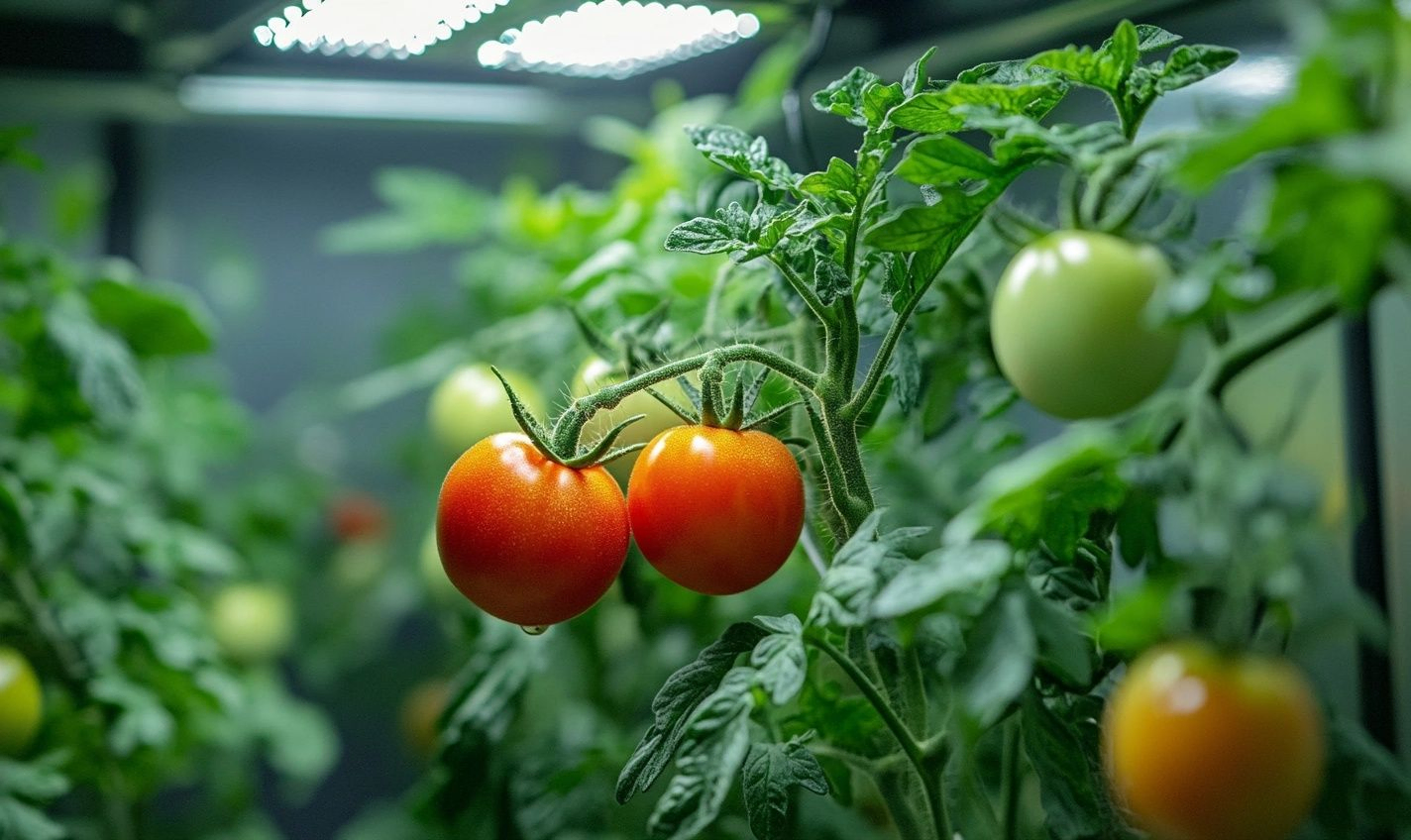
The Advantages of Using LED Grow Lights for Tomatoes
Boost Your Tomato Yield
If you’re wondering what the best LED grow light for tomatoes is, consider this: LEDs are designed for efficiency and high performance. They can boost your tomato yield! Imagine plump, juicy tomatoes thriving under the right light conditions. With LED grow lights, you’re offering your plants the specific spectrum they crave. This means brighter reds and fuller sizes in every bite!
Energy Efficient and Cost-Effective
Why pay more for electricity when you can save? LED lights consume less power compared to traditional grow lights. They use about 50% less energy! You’ll notice a drop in your electricity bill in the long run. It’s like finding extra cash in your pocket every month. Use that money for other gardening tools or even a delicious tomato salad!
Longevity That Lasts
Did you know that LED grow lights can last up to 50,000 hours? Yes, you read that right! This is equivalent to years of growth. That means less hassle of replacing bulbs and more time to focus on your tomatoes. Consider investing in a sturdy, long-lasting shield for your plants. It’ll keep hitting those high notes of brightness!
Less Heat, More Happiness
Too much heat can be a disaster for tomato plants. LEDs are cool to the touch, which prevents overheating, allowing you to keep lights closer to your plants without burning them. Consider it a cozy blanket that keeps your tomatoes comfy. With less stress, they can grow healthy and strong!
Spot-on Customization
Another real advantage? You can customize the light spectrum! Different growth stages require different light. Seedlings love blue light, while mature tomatoes thrive under broader spectrums. It’s like having a tailor for your plants! Adjust the spectrum to meet their needs, ensuring they flourish.
Environmentally Friendly
Ah, the cherry on top! LED lights are eco-friendly. They are made without harmful chemicals and can be recycled. Growing tomatoes with LEDs not only benefits your plants but also the planet. Isn’t it satisfying to know you’re doing your part for Mother Nature?
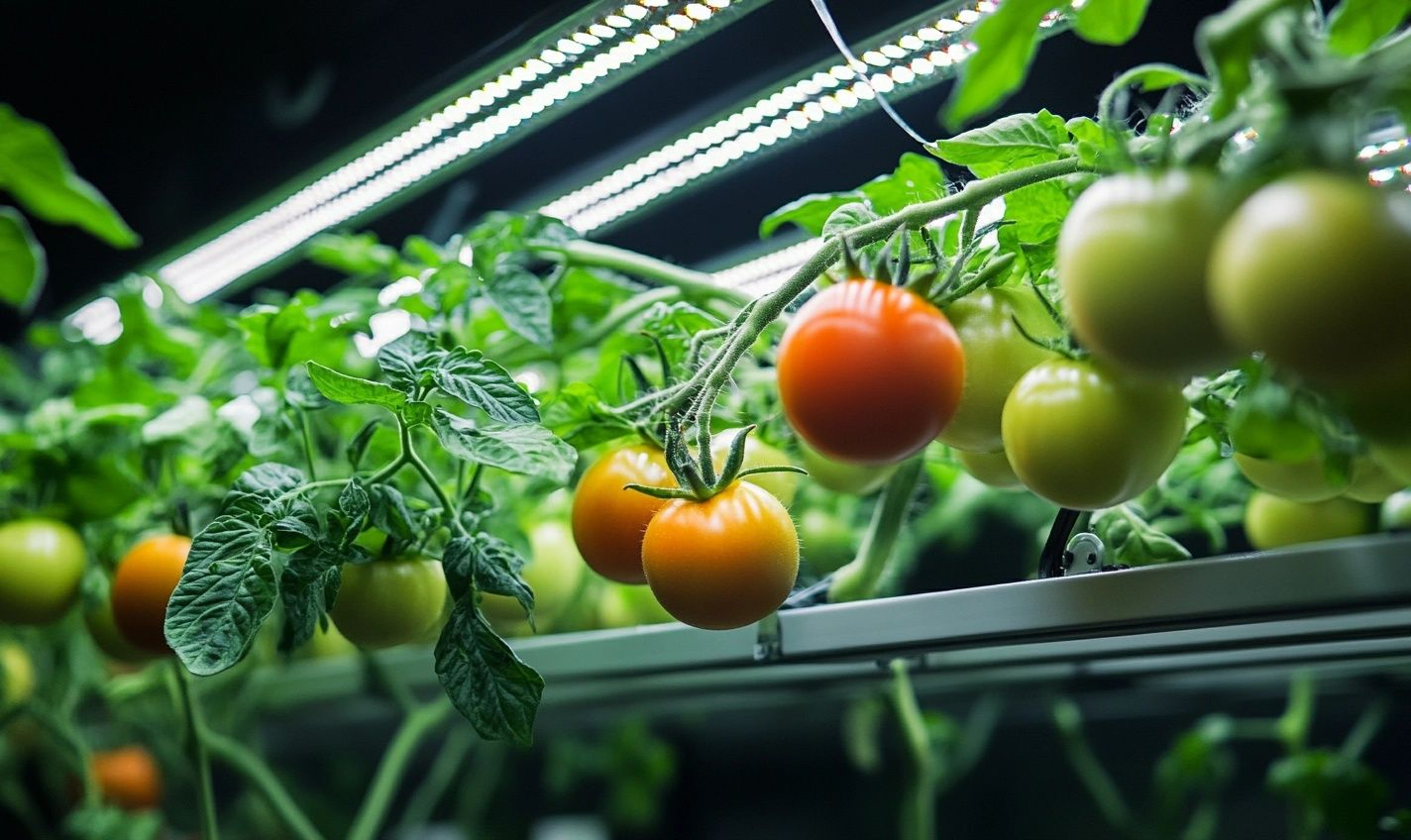
Key Features to Look for in an LED Grow Light
Searching for the best LED grow light for tomatoes can feel overwhelming. With so many options, how do you know which ones deliver? Let’s break down the key features that can make or break your indoor tomato garden!
Wattage Matters
First off, the wattage is enormous! Higher wattage usually means brighter light. But don’t just pick the brightest light available. Instead, think about the size of your garden. As a rule of thumb, a good range is 30-50 watts per square foot. Think of it like a sunbathing session; the more sunlight you get, the better your tan, right?
Light Spectrum is Key
Another super important feature is the light spectrum. Different stages of growth need different spectrums. For example:
- Seedling stage: Blue light promotes healthy leaf growth.
- Veg stage: Full-spectrum LEDs work wonders here.
- Flowering stage: Focus on the red light for those juicy tomatoes!
Just like cooking, using the right ingredients makes a big difference! Your plants are no different.
Heat Output
And then there’s heat output. LEDs are generally excellent, but some models can still get hot. High temperatures can stress your plants, just like wearing a winter coat at the beach. Look for lights with good heat dissipation, ensuring your tomatoes stay happy. Good airflow around your setup helps, too!
Adjustability is a Plus
Can you raise or lower your lights? Adjustable fixtures allow you to control the distance as your plants grow, saving you a lot of hassle compared to fixed lights. Imagine using a ladder instead of a stairway; climbing a ladder is much easier when reaching for something high!
Energy Efficiency
Finally, consider energy efficiency. You want to enjoy your garden and keep your electricity bill in check. Look for lights with good ratings, which means less junk for the planet and your wallet!
So, when choosing the best LED grow light for tomatoes, remember these features. They can turn your tomato garden from mediocre to magnificent with just the proper shine!
Top LED Grow Lights Recommended for Tomato Growth
The Brightest Picks for Your Tomatoes
Choosing the proper lighting is vital if you’re serious about tomato gardening. So, what is the best LED grow light for tomatoes? Let’s break down some solid options that won’t let you down. These lights are like a ray of sunshine for your leafy friends!
King LED Grow Light
This one is a rockstar among plant parents! The King LED offers full-spectrum light, catering to every stage of tomato growth. Its energy-efficient design means you’ll save on bills without sacrificing quality. Its high PAR output maximizes your tomatoes’ potential.
VIPARSPECTRA Reflector Series
Have you ever wanted a light that mimics the sun? Look no further! The VIPARSPECTRA is equipped with reflector technology that focuses light where it’s needed most. This means your tomatoes get the brightness without the excess heat. Keeping your plants cool helps them thrive!
Spider Farmer SF Series
With the Spider Farmer, you’re not just buying a light but investing in your tomato dreams. The Samsung diodes and high-efficiency drivers give your plants a boost. And the sleek design looks great in any home setup!
HLG 100 V2
This compact but powerful light uses high-quality diodes to promote robust growth. It’s perfect for smaller spaces. And guess what? You can still expect intense yields from your tomatoes!
Top Features to Look Out For:
- Full Spectrum Coverage: Ensures every growth stage is supported.
- Energy Efficiency: Reduce your carbon footprint and save on power.
- Heat Management: Keeps your plants calm and happy.
Choosing the right light is like picking the perfect song for a road trip—it sets the vibe! If you choose brands with good reputations and features like those listed above, you’ll feel confident in your gardening journey.
How Do I Know Which is Right?
Ask yourself these questions: What’s my growing space like? How many tomatoes do I want to grow? Understanding your needs helps narrow down your choices. Grab a light that suits your setup!
You can watch your tomatoes thrive with a solid LED light, producing juicy fruits that shine at any meal. And isn’t that what it’s all about? Eat fresh, grow fresh!
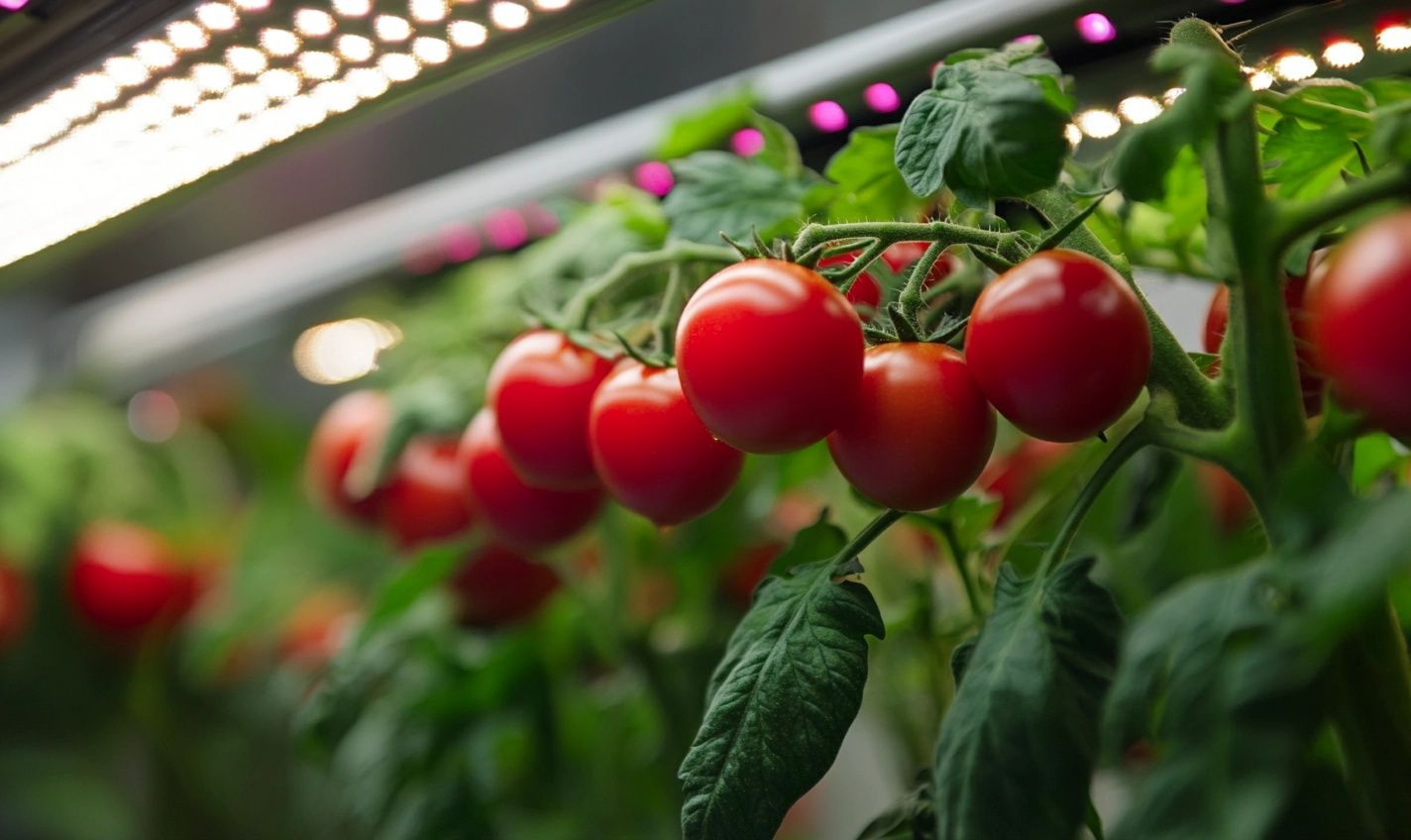
Comparing Different Types of LED Grow Lights
Choosing the right LED grow light can feel like searching for a needle in a haystack. There are many options, each with its perks! So, how do you determine the best LED grow light for tomatoes? Let’s break it down.
Full Spectrum vs. Specific Spectrum
First, we have full-spectrum LED grow lights. Think of them as the all-you-can-eat buffet for your tomatoes. They provide a wide range of wavelengths, mimicking sunlight. This means your plants can grow strong and healthy at all stages, from seedlings to ripe tomatoes.
On the other hand, specific spectrum lights are like ordering just one dish. These lights focus on specific wavelengths, such as red and blue, which are crucial for photosynthesis. They’re practical, but they might not provide all the benefits that full-spectrum lights do.
Passive Cooling vs. Active Cooling
You’ve probably heard about passive cooling and active cooling systems. Passive cooling lights are the night owls of the grow light world. They chill out and work quietly without fans, making them energy-efficient and ultra-quiet—perfect for keeping the peace!
Active cooling, however, is like that roommate who cranks up the AC. These lights have built-in fans, which can help prevent overheating. They’re great for intense use but can be a bit noisier. Ask yourself: Do you need cooler performance or a quieter setup?
Price Points and Efficiency
When it comes to price, there are budget options and high-end models. Budget lights are great for beginners. They can get the job done without breaking the bank. Yet, they might not last long under heavy use.
Conversely, investing in a high-end model can be beneficial in the long run. They tend to be more efficient and durable. Plus, they come packed with features that maximize your tomato-growing journey.
Quick Recommendations
Here’s a handy list of popular types of LED grow lights:
- Best Full Spectrum: Roleadro LED Grow Light
- Best Specific Spectrum: Spider Farmer SF Series
- Best Passive Cooling: VIPARSPECTRA LED Grow Light
- Best Active Cooling: Mars Hydro TS Series
Your choice ultimately depends on what you’re looking for! Consider your space, budget, and the light’s specific needs. After all, happy tomatoes make for a bountiful harvest!
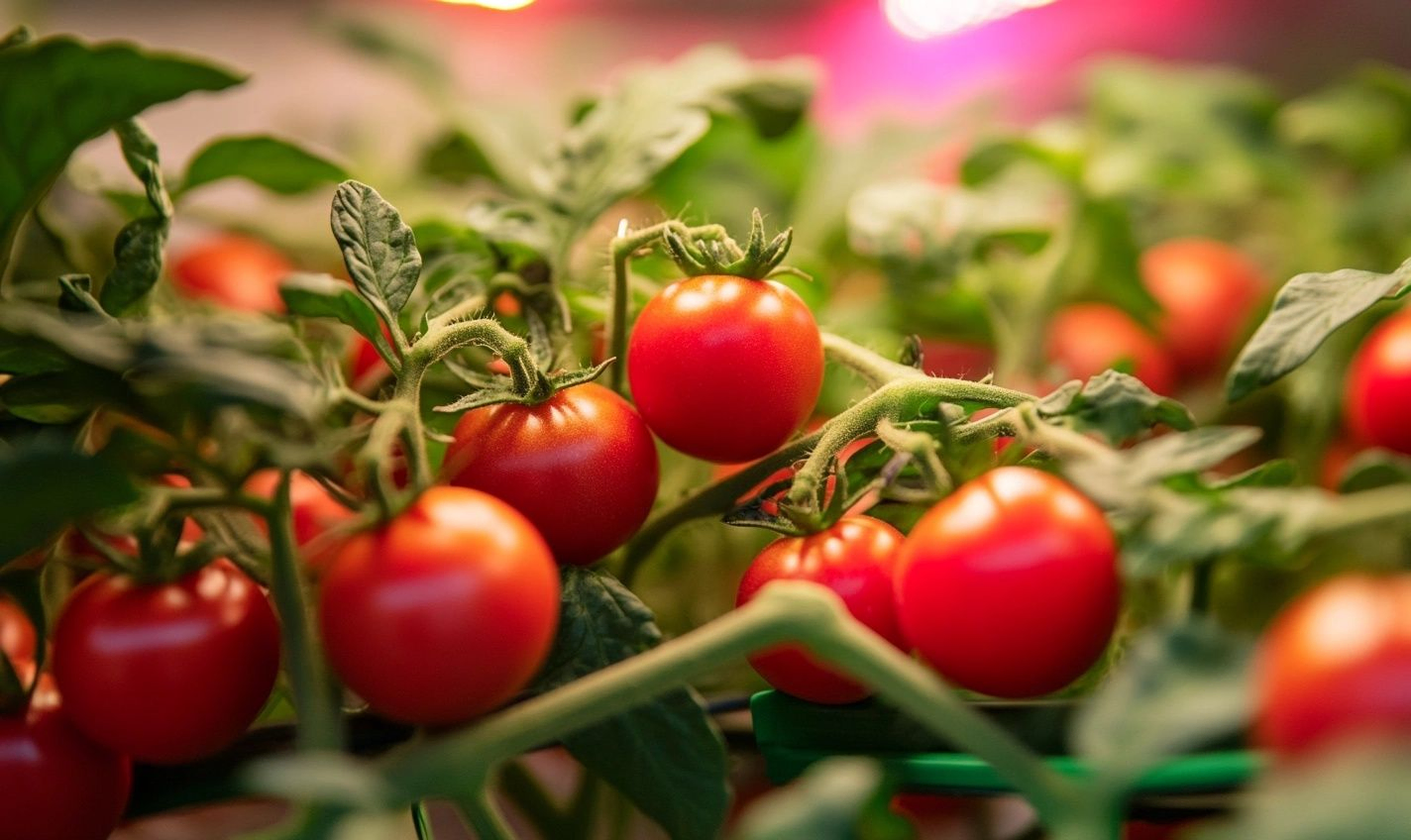
Setting Up Your LED Grow Light for Optimal Tomato Growth
Finding the Right Height
So, you’ve got your LED grow light. Awesome! But now, where should you put it? The height matters more than you think. If it’s too close, your tomato plants could get scorched. Too far, and they might stretch, looking for that precious light.
Generally, keeping the light about 24-30 inches above your plants works well. You can adjust as they grow! Think of it like a sunbathing session—getting just the right amount of sun is vital.
Light Schedule Magic
Have you ever considered how much light your tomatoes need? They crave around 12-16 hours a day, and this mimicry of summer sunshine helps them flourish. A timer can be your best buddy here. Set it, forget it, and let your tomatoes soak it all up!
Temperature Check
Let’s not forget about temperature! Tomatoes love warmth but not hot, hot heat. Maintain a temperature range of 70°F to 80°F for that happy balance. If your LED grow light runs warm, consider adding some fans. Air circulation keeps everything fresh and lively.
Watering Wisely
With all this light, your tomatoes might get thirsty. Monitor the soil moisture. It’s a fine line—you don’t want to drown them! Aim for the top inch to dry out before giving them a good drink.
Installing on Adjustability
As your tomatoes grow, your LED light must be adjustable. Investing in a system that allows you to move the lights up or down can make a difference. This way, they can bask in comfort during every growth stage!
Creating a Light Spectrum
Not all lights are created equal. You want a full spectrum LED grow light. A balanced spectrum mimics natural sunlight. That’s what your tomatoes need to thrive and produce those luscious fruits you dream of. Think of it as feeding your plants their favorite meals!
Tips for Success
Here are a few quick tips:
- Keep the light clean; dust can block light!
- Rotate plants occasionally for even growth.
- Observe your plants. They’ll tell you if something is off.
Prepare for an exciting journey of growing the best tomatoes with the proper setup! Let’s make your garden dreams blossom!
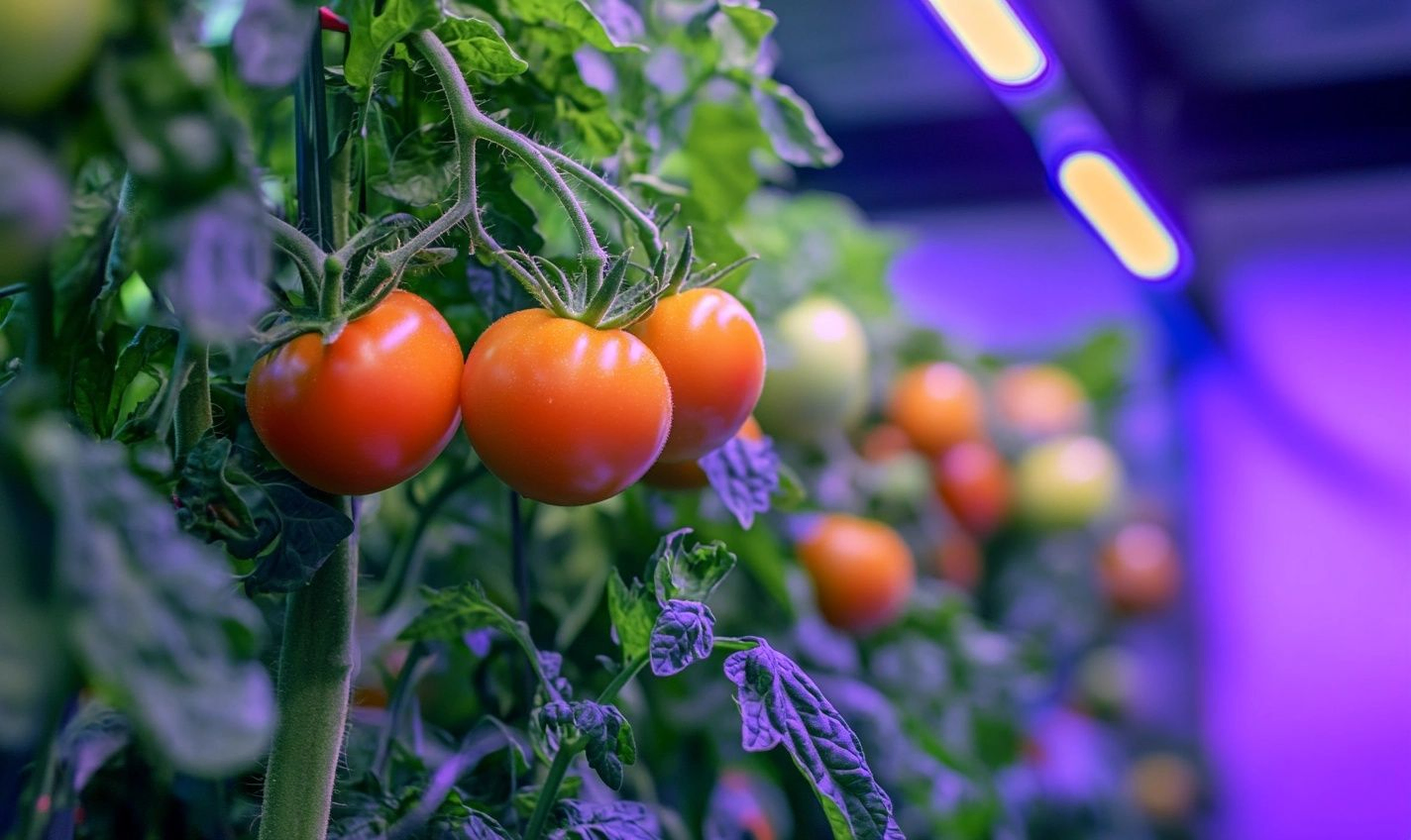
Common Mistakes to Avoid When Growing Tomatoes with LED Lights
Ignoring the Right Distance
When growing tomatoes with LED lights, the distance matters. Did you know that putting those lights too close can scorch your plants? Your tomatoes might stretch awkwardly towards them if they’re too far away. It’s like playing hide and seek; no one wins if you’re too far!
Neglecting Photoperiods
Another common mistake is overlooking photoperiods. Tomatoes crave about 12-16 hours of light daily. Think of it as their “sunshine schedule.” Too much darkness? They’ll sulk. Too little light? They’ll struggle. Keep a steady routine; it’s their version of a cozy bedtime story.
Over-Watering or Under-Watering
Using LED grow lights doesn’t change your tomato plants’ basic needs. Overwatering can lead to root rot, and underwatering can cause wilting. Find that sweet spot! A good rule is to check the soil moisture; a finger test works wonders!
Choosing the Wrong Spectrum
You might think all lights are created equal, but choosing the incorrect spectrum is just, well, wrong. Tomatoes flourish with a balance of red and blue light. Why? Red promotes flowering, and blue encourages growth, like a perfect duet! So, what’s the best LED grow light for tomatoes? Look for a full-spectrum option!
Forgetting to Rotate Your Plants
Plants are like little sunbathers. They love the sun, but they also love a good tan! If you don’t rotate them, one side will get all the love, and the other will be left in the shadows. Every week, give your tomatoes a little spin for even growth. It’s like going to the beach—you want an even tan.
Not Monitoring Temperature and Humidity
Tomatoes are sensitive souls. They thrive at a comfortable temperature of around 70-80°F. However, they also need humidity levels between 40-60%. If it gets too hot, they’ll wilt; if it’s too damp, you might invite diseases. Invest in a thermometer and hygrometer for your indoor garden.
Rushing the Harvest
You may be tempted to pluck those juicy tomatoes early, but wait! Every day on the vine adds sweetness. Think of it like a fine wine; patience makes it better! Allow them to ripen fully before harvesting. Your taste buds will thank you later!
Real Customer Experiences with LED Grow Lights for Tomatoes
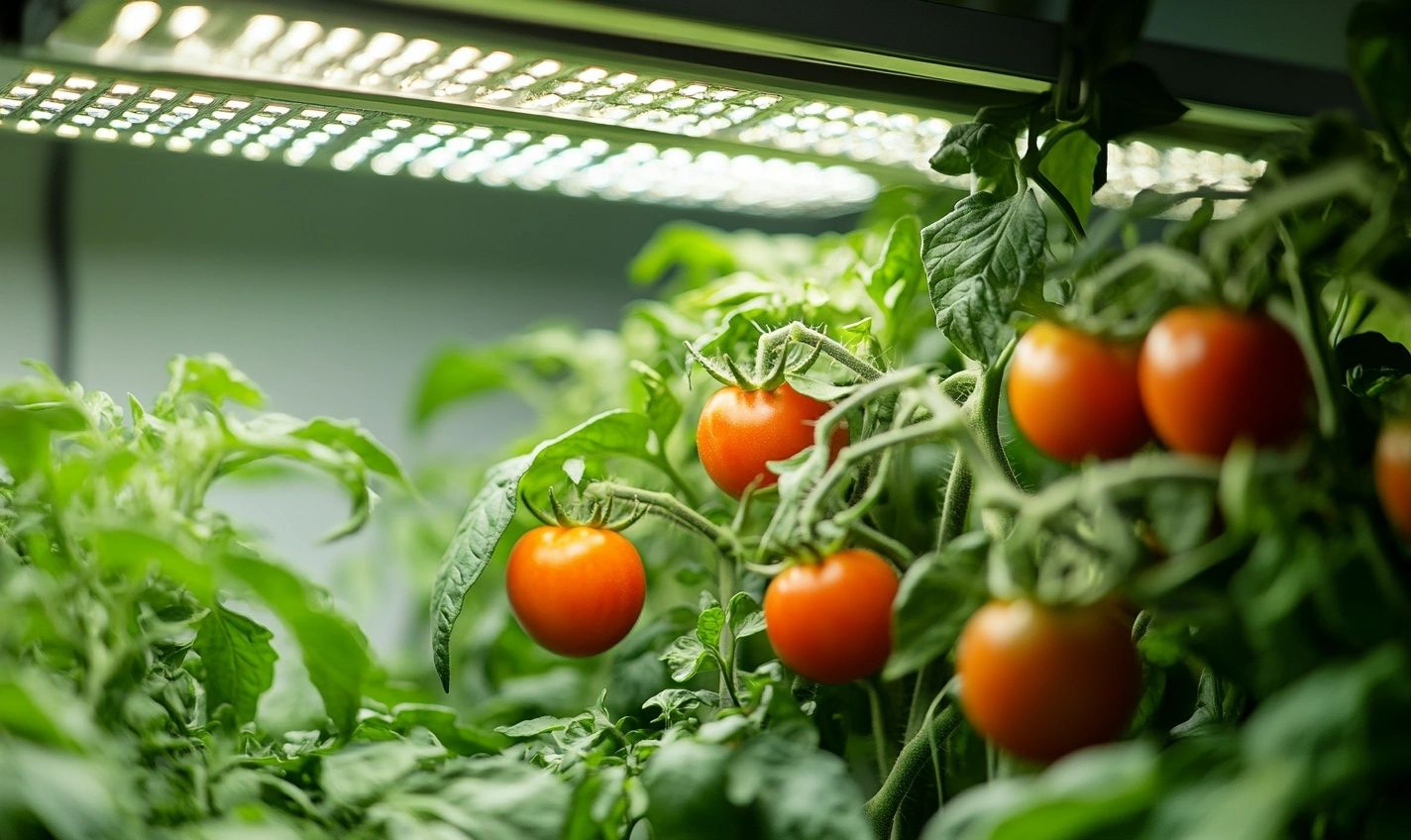
Personal Stories from Fellow Tomato Enthusiasts
You might wonder if switching to LED grow lights will make a difference. Let’s dive into real stories from those who have taken the plunge. Meet Jake, an avid tomato grower from California. He says, “I was tired of battling with the seasons. After installing my LED grow lights, I’m harvesting tomatoes year-round. It feels like I’ve got my mini greenhouses!”
Then there’s Sarah, a beginner who wondered, “What is the best LED grow light for tomatoes?” After research, she picked up a full-spectrum LED. She shares, “I was initially skeptical, but my plants started thriving in just a few weeks. The colors were vibrant, and I even had tomatoes in the winter!”
What Customers Love About Their LED Grow Lights
Many folks rave about the simplicity and effectiveness of LED lights. Here are a few highlights:
- Energy Efficiency: Customers have noticed lower electricity bills.
- Long Lifespan: They last longer than traditional bulbs, making them cost-effective.
- Lower Heat Output: No more scorching plants – a big win!
Tim shares a little hack, “I set my LED grow light on a timer. It runs for 12 hours a day. My tomatoes love it!” Using a timer means you never forget to turn on the lights, and your plants thrive.
Challenges Faced and Overcome
Of course, it’s not all sunshine and roses. Some customers experienced a learning curve. Emily recalls, “I didn’t realize my lights were too close initially, and some leaves burnt. But once I adjusted the height, it was like my plants opened their arms to the light!”
Others mentioned finding the right spectrum was vital. “I initially went with a cheap light, but my tomatoes weren’t growing well,” says Mark. “Investing in a quality LED light transformed my garden. It was honestly like flipping a switch!”
So, whether you’re a seasoned grower or just starting, these experiences show the power of LED grow lights for flourishing tomatoes. Dive into the world of LED growing lights; you could also create your own success story!
Conclusion
In conclusion, determining the best LED grow light for tomatoes ultimately hinges on your evolving needs and your growing space’s specific conditions. By carefully considering essential factors such as light spectrum, wattage, and efficiency, you can select a product that enhances the growth and yield of your tomato plants.
Whether you choose full-spectrum LED lights that cover all growth stages or specialized models designed for flowering, the goal remains to create an optimal environment for your tomatoes to thrive. Remember to factor in the lights’ energy consumption and heat output, ensuring they fit within your gardening setup.
With technological advancements continuously improving LED grow lights, the options are plentiful. Conduct thorough research and read customer reviews to help guide your purchasing decision. Investing in the right LED grow light sets the stage for a bountiful harvest and healthier plants, making your tomato-growing journey a rewarding experience.
Frequently Asked Questions (FAQs)
What is the best lead grow light for tomatoes?
The best LED grow lights for tomatoes typically include full-spectrum options that provide suitable wavelengths for photosynthesis. Some top-rated brands include Spider Farmer, HLG, and Viparspectra, which offer efficient lighting that promotes healthy growth and fruiting.
How much light do tomatoes need from LED grow lights?
Tomatoes require about 12-16 hours of light per day. Using LED grow lights, aim for a light intensity of 400-700 µmol/m²/s during the vegetative phase and slightly higher during fruiting.
Can I use any LED light to grow tomatoes?
Not all LED lights are suitable for growing tomatoes. Full-spectrum LEDs that mimic sunlight are essential, as they provide the necessary wavelengths for plant growth and flowering.
What spectrum should I look for in LED grow lights for tomatoes?
For tomatoes, look for full-spectrum LED lights, including blue light (for vegetative growth) and red light (to promote flowering and fruiting). A balanced spectrum with UV and IR can further enhance growth.
When should I switch to bloom mode for my tomato plants?
Switch to bloom mode when your tomato plants start to flower, typically when they have 4-6 sets of true leaves. This phase usually occurs a few weeks after transplanting and is vital for fruit development.
How far should lead grow lights be from tomato plants?
The distance between LED grow lights and tomato plants depends on the light’s wattage and model. Generally, lights should be kept 12-24 inches above the canopy to prevent leaf burn and ensure adequate light penetration.
Do LED grow lights consume a lot of electricity?
LED grow lights are known for their energy efficiency. They consume less electricity than traditional grow lights while providing the same or better light intensity output, making them a cost-effective choice for growing tomatoes.
Can I grow tomatoes indoors with LED grow lights?
Yes, you can successfully grow tomatoes indoors using LED grow lights. Ensure you provide enough light, humidity, and soil conditions, and monitor your plants’ needs for optimal growth.

